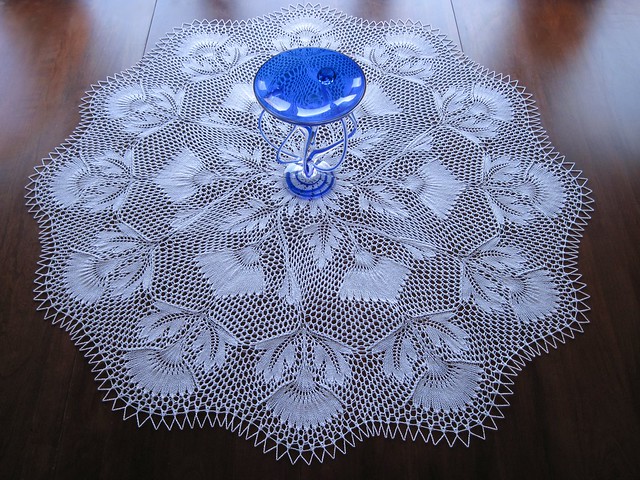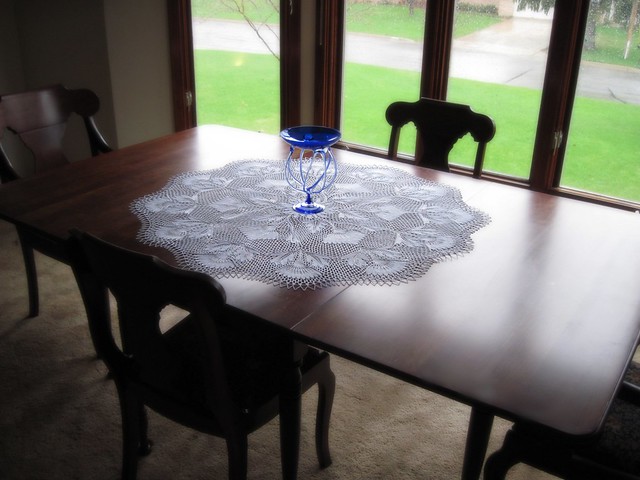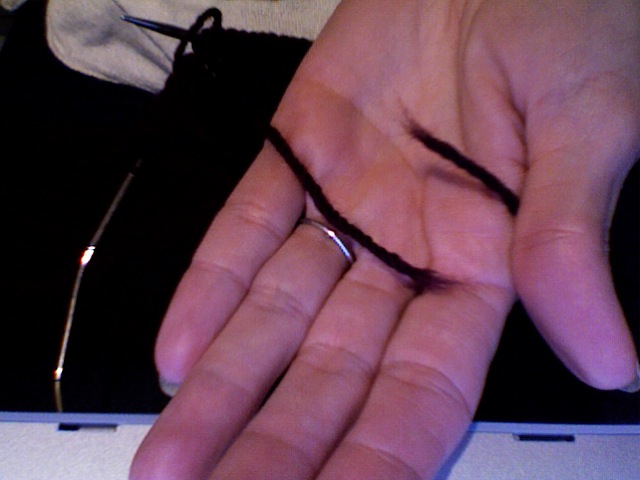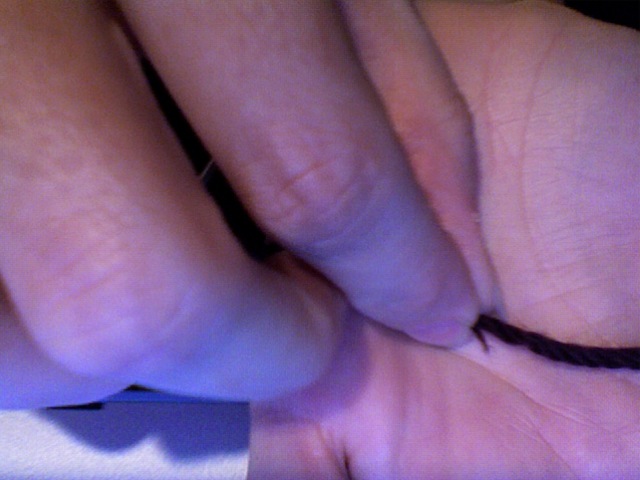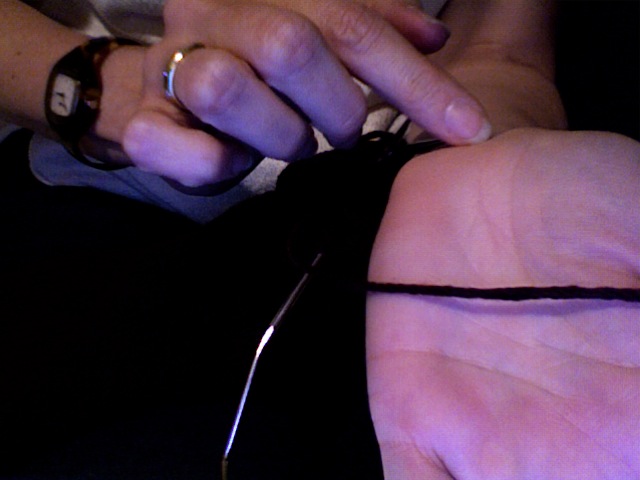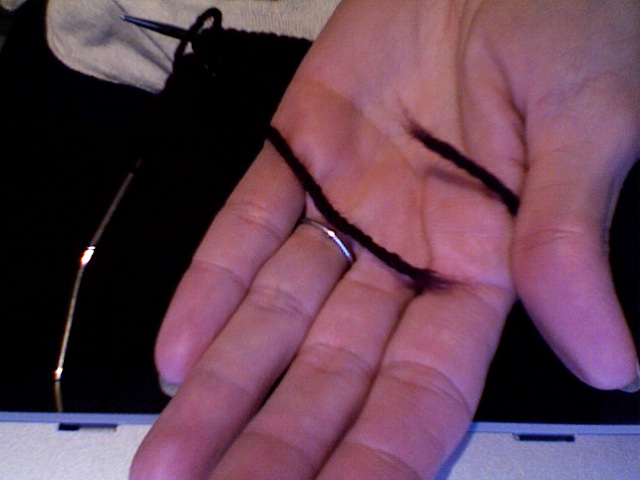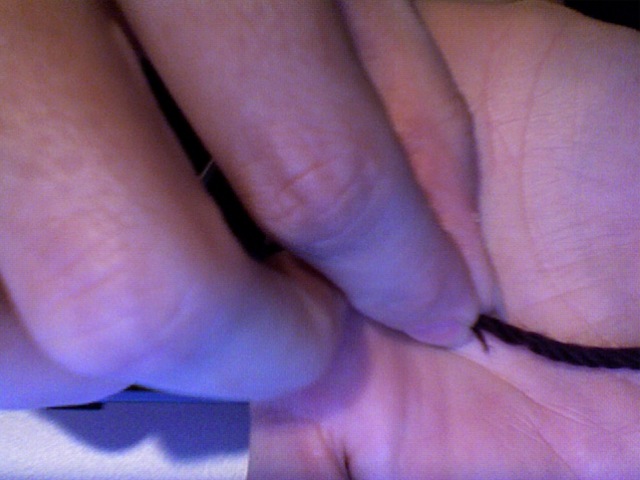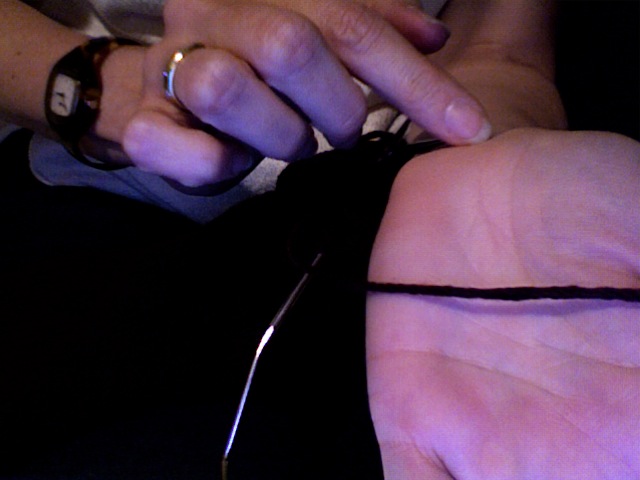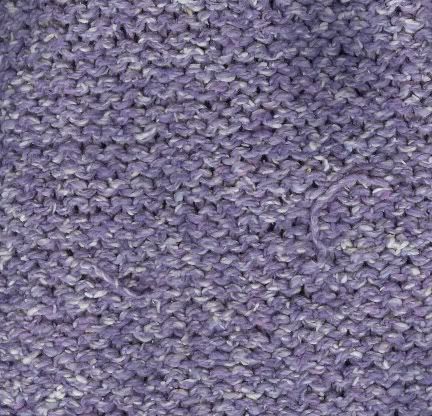First, I’d like to say thank you for the birthday wishes and for all of the advice and encouragement on the Pearl Crisis. I went ahead with the large pearls I have. Having no invisible thread, which was a good suggestion, I chose not to care. I’ll post some pictures of the finished product eventually.
Today, however, I’ll tell you a story about the hazards of not paying attention. No, it’s not the starting-my-hair-on-fire story – it’s something far more horrible: making a really big mistake in your lace knitting a number of rows back when you have 1300+ stitches per row. Yeah. That.
There I was, knitting happily along on my Feather and Fan shawl. I was doing the pattern row, where you place yarnovers and decreases to get the feather and fan shaping. I did a series of 8 k2togs, and then I was supposed to do 8 yarnovers separated from each other by a single knit stitch. There was a problem, though: I didn’t have 8 stitches left in my pattern repeat. I only had three or four. Looking at my knitting I realized that four rows earlier — the last time I was supposed to do a pattern row — I had forgotten to do the yarnovers on one half of this particular repeat. I’m not sure how I did something so stunningly careless, but I did.
Now, if I had forgotten or dropped one yarnover, it would be no big deal. I would simply use a crochet hook to create a yarnover between the appropriate two stitches by stretching the running thread between them and then “laddering” my way up to the current row using the running thread on the intervening rows. That after-the-fact yarnover would be a bit smaller than the rest of them because it would be created using less yarn than truly necessary. Moreover, the stitches on either side might get pulled a bit tight. It’s not a perfect solution but after blocking, it would be pretty imperceptible. That solution would certainly be far preferable to ripping back.
That trick wasn’t going to work to replace 8 missing yarnovers. There simply would not be enough yarn to do it in such a concentrated place. Let me just remind you that I have 1300+ stitches per row right now; it takes me almost an hour to knit one row. So ripping back was not an option, either.
So here’s what I did. I undid the k2togs that overlapped where my yarnovers were supposed to have been. Then I ripped back the 8 stitches that were supposed to have yarnovers in between them. (Four rows total.) That left me with four long strands of yarn. I broke each of them in half. For each row, I wrapped new yarn around my needle 8 times to roughly calculate how much yarn I needed for each new stitch I was going to create and then added a bit extra. I then felt spliced that new length of yarn into the middle of what was already there. (Is this making sense?) I then had enough yarn to add in the yarnovers on the first row and then ladder up the stitches created by them on the subsequent rows.
It was a pain in my birthday ass, but a lot easier and faster than reknitting four rows.

